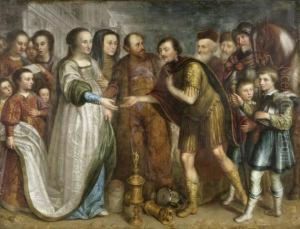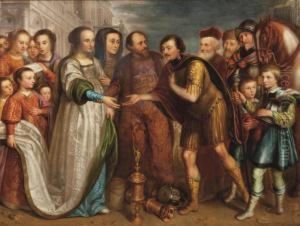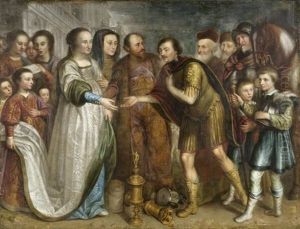Franse Jan Verzijl Paintings
Franse Jan Verzijl, born in 1599 and died in 1647, was a Dutch painter whose life and work are intertwined with the Dutch Golden Age of painting, a period characterized by a flourishing of arts and culture in the Netherlands. Despite being less well-known than some of his contemporaries, Verzijl's contributions to the art world during this prolific era are notable for their quality and the insights they provide into the period.
Verzijl was primarily known for his genre scenes, portraits, and still lifes, which were typical subjects of the Dutch Golden Age painters. His work reflects the era's interest in realism, attention to detail, and the exploration of light and shadow, which were hallmarks of the period. Like many of his peers, Verzijl's paintings often depicted everyday life, offering a window into the customs, fashions, and domestic interiors of 17th-century Holland.
Though specific details of Verzijl's life are less documented than those of more famous artists like Rembrandt or Vermeer, it is known that he worked in several Dutch cities, which was common for artists of the time seeking commissions and patronage. His style was influenced by the major artistic trends of the era, including Caravaggism, with its dramatic use of light and shadow, and the detailed realism of earlier Flemish painting.
Verzijl's legacy, like that of many artists of his time, was rediscovered and reassessed centuries later. Today, his works are studied for their artistic merit and as historical documents that offer insights into the culture and society of the Dutch Golden Age. Despite the scarcity of records about his personal life, Verzijl's paintings continue to be appreciated for their beauty, craftsmanship, and their portrayal of 17th-century Dutch life.


